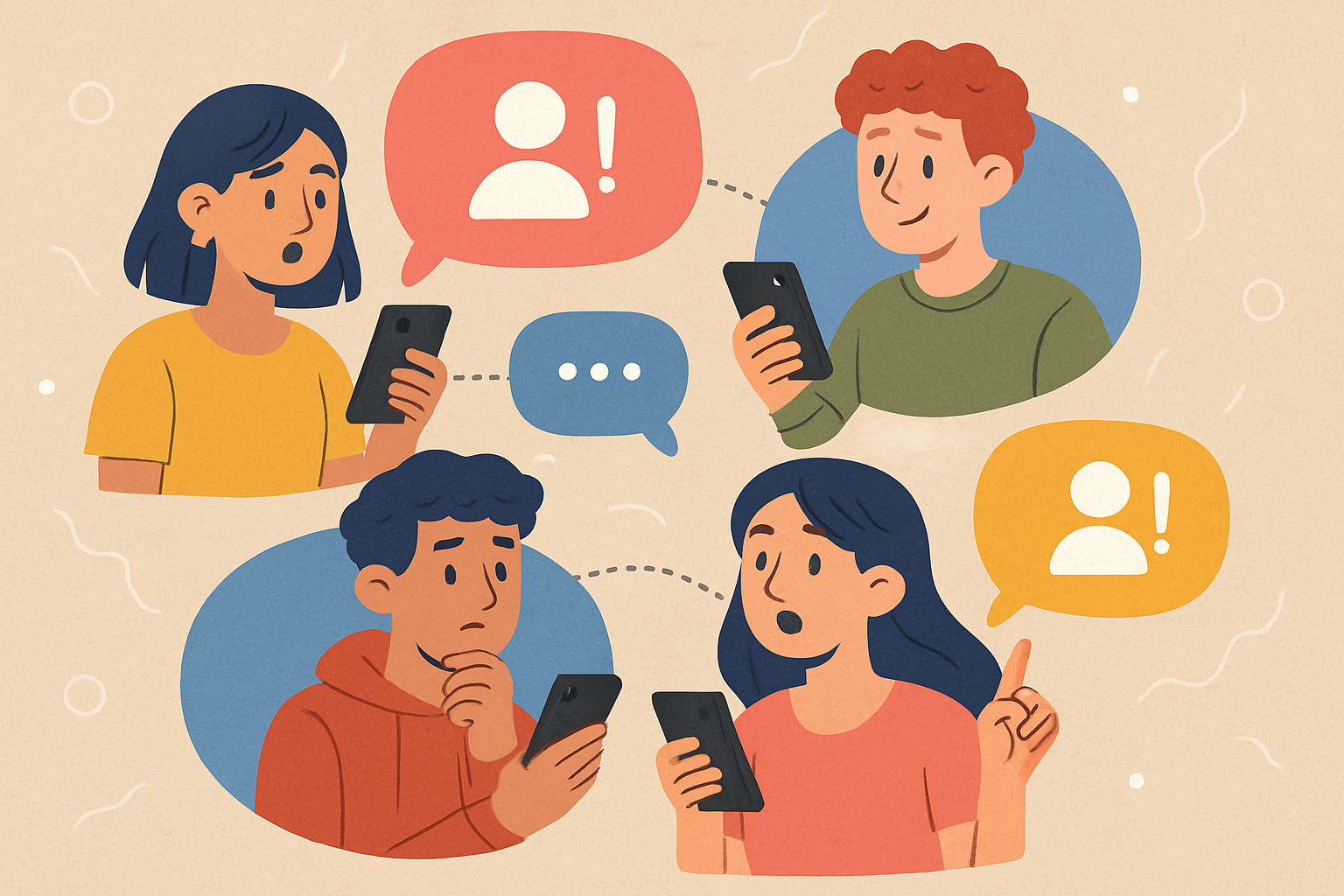
Think of your friends as dots and the relationships between you as lines. That picture—a network—can tell us a great deal about how a message travels. Raya-Díaz and colleagues explain that we can describe who’s connected to whom with something called an adjacency matrix, which is just a grid that marks a 1 when two people are linked and 0 when they aren’t. From that grid, you can spot who knows lots of people (their “degree”) and even find “hubs,” those super-connected folks who shrink distances in a network and speed things up. In simple terms, if a rumor hits a hub, it can quickly jump to many others.
But not all groups look the same. One shape the authors use is the “barbell” network: two tightly connected friend groups, separated by a thin path—perhaps that one person who belongs to both circles. In this setup, what happens to a rumor depends a lot on the people sitting on the bridge between the two sides. If the bridging person doesn’t pass things on, one whole half may never hear the news. That’s why “betweenness centrality”—basically, how often someone sits on the shortest route between others—matters so much for real communication. The higher your betweenness, the more you act like a hallway everyone has to walk through.
The team modeled a classroom to show this in action. Each student had a few simple traits: the number of connections they had (degree), how close they were to everyone else, whether they were on those in-between routes (betweenness), and—crucially—whether they chose to cooperate by passing the message along. One student initially received the rumor; after that, its spread depended on two factors: their willingness to share and the degree of betweenness of the neighbors they spoke to. When the “bridge” students cooperated, the message flowed to both sides; when they didn’t, it stalled, even if plenty of people on each side were chatty. You’ve seen this in everyday life: a club hears about an event only if the one friend who’s in both the club and your class actually tells them.
So what can you do with this? First, notice the bridges in your world—the friend who hops between group chats, the classmate in multiple circles, the teammate who also runs student council. If you want something to spread fast (a study guide, a show, a fundraiser), talk to them early. If you want to keep something confidential, be cautious about sharing it with people who belong to different groups. And remember, spreading isn’t automatic; it’s a choice. In the authors’ simulations, flipping cooperation on or off at the bridge changed everything—proof that a single person can shape what the whole network knows. That awareness helps you share more effectively, avoid misinformation, and ensure the right people actually hear what matters.
Reference:
Raya-Díaz, K., Gaxiola-Pacheco, C., Castañón-Puga, M., Palafox, L. E., & Rosales Cisneros, R. (2018). Influence of the Betweenness Centrality to Characterize the Behavior of Communication in a Group. In Computer Science and Engineering Theory and Applications, Studies in Systems, Decision and Control (Vol. 143, pp. 89–101). https://doi.org/10.1007/978-3-319-74060-7_5
Privacy Notice & Disclaimer:
This blog provides simplified educational science content, created with the assistance of both humans and AI. It may omit technical details, is provided “as is,” and does not collect personal data beyond basic anonymous analytics. For full details, please see our Privacy Notice and Disclaimer. Read About This Blog & Attribution Note for AI-Generated Content to know more about this blog project.